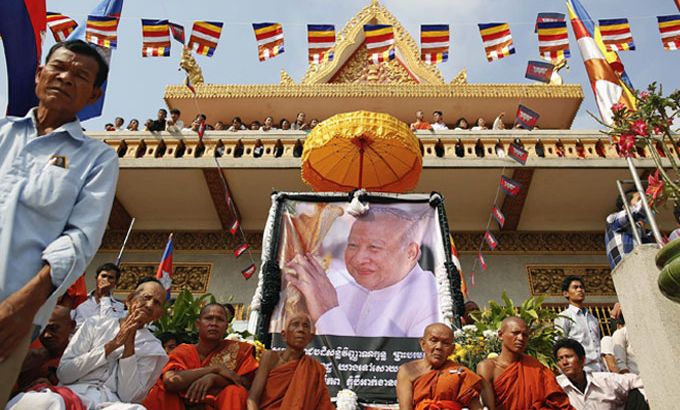Huge crowds mourn Cambodia’s former king
Hundreds of thousands fill streets of Pnom Penh to pay their final respects to Norodom Sihanouk, who died in October.

Hundreds of thousands of Cambodians have gathered to pay their final respects to their former king Norodom Sihanouk, who died of a heart attack in Beijing in October, aged 89.
The body of the late monarch was being paraded through the capital, Phnom Penh, from the Royal Palace to an ornate, custom-built crematorium in a city park.
Keep reading
list of 4 itemsWhat happens when activists are branded ‘terrorists’ in the Philippines?
Are settler politics running unchecked in Israel?
Post-1948 order ‘at risk of decimation’ amid war in Gaza, Ukraine: Amnesty
Friday’s funeral ceremony included a 101-gun salute and gave the crowds the chance to bid a final farewell to their king, who was placed on the throne by the French at the age of just 18, but developed into a canny political survivor.
Many wept as the kilometer-long procession slowly proceeded.
“Since I was born, I have seen him doing everything for the country and people,” said Un Veth, 74. “Today is the last day. In the future I can only see him in photographs.”
Authorities had erected towering portraits of Sihanouk, repaired crumbling kerbs along the procession route and established road blocks around the palace and park, where the cremation will be held on Monday, away from public view.
Khmer Rouge ties
A father of 14 children over six marriages, Sihanouk abdicated in 2004 after steering Cambodia through six decades, which were marked by independence from France, civil war, the Khmer Rouge regime, his own exile and finally peace.
Many elderly Cambodians credit him with overseeing a rare period of political stability in the 1950s and 1960s, following independence, until the emergence of the Khmer Rouge in the 1970s.
But Sihanouk’s record is not without reproach.
After being ousted by the US-backed General Lon Nol in 1970 he aligned himself with the Khmer Rouge, only to be placed under house arrest as the communist regime terrorised the nation, killing up to two million people, including five of his own children.
Before the Vietnamese toppled the Khmer Rouge in 1979, Sihanouk took exile in China, regaining his throne in 1993, although his influence was greatly diminished.
Foreign dignitaries including French Prime Minister Jean-Marc Ayrault, Japan’s Prince Akishino and a host of Asian leaders or high-ranking officials are due to attend the cremation.
After the ceremony Sihanouk’s remains will be put in a gold-coloured urn that will be placed in a stupa inside the Royal Palace, in line with his wishes.